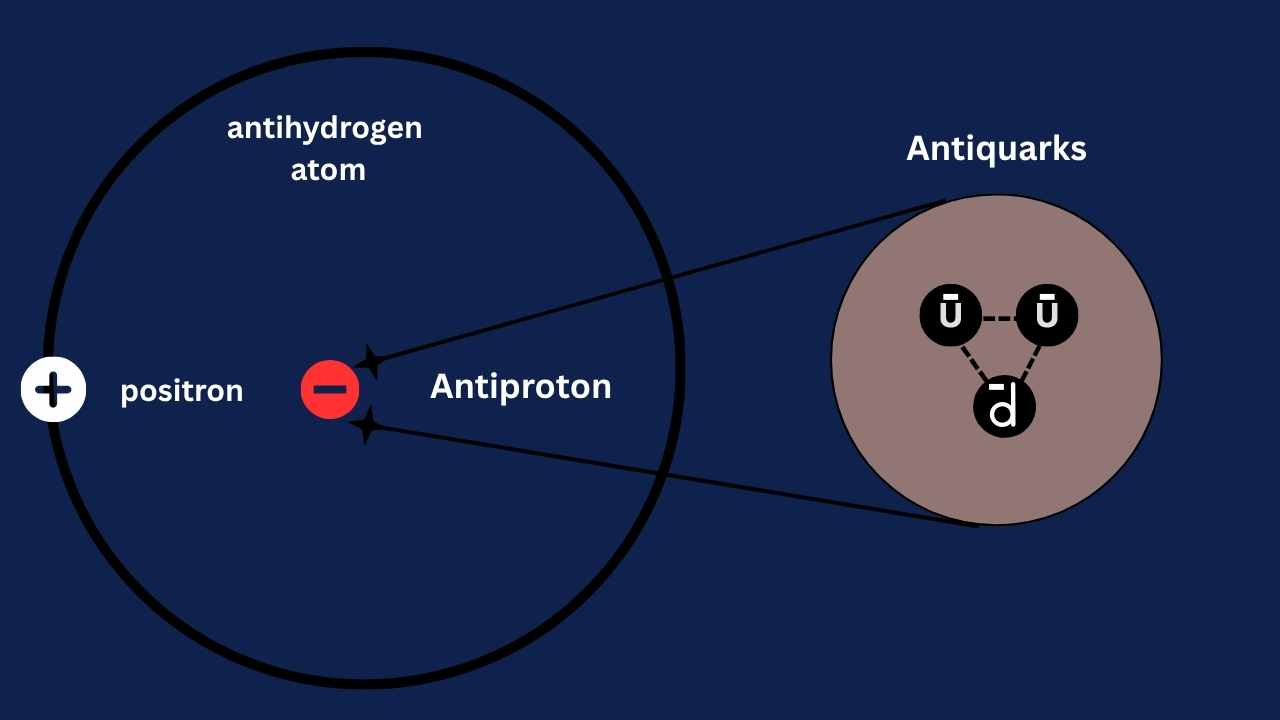Antimatter is the most expensive substance on Earth, valued at $62.5 trillion per gram. Learn its science, uses, dangers, and future possibilities.
Antimatter The Most Expensive Substance on Earth

If words like antimatter sound like something that is right out of a science fiction movie then it is actually real and something absolutely fascinating. It is the most expensive substance on the planet and may be able to turn the game in terms of energy, medicine, and space travelling.
This paper will tell us what antimatter is, why it is so costly, its application and future prospect of science and technology in this world.
What Is Antimatter?
First, what do we mean by matter? Matter surrounds and sits on us all of the things--people, air, water, buildings. Everything is made of atoms, whose constituent parts include protons (positive charge), neutrons (neutral particles) and electrons (negative charge).
Matter has a corresponding antimatter, the mirror of matter. It is made of antiparticles:
●
Antiprotons – the
same as protons only negative.
●
Positrons – like
the electrons but they have a plus charge.
●
Antineutrons – the
same weight as about neutrons but different magnetic characteristics.
Antimatter and matter react when they touch each other, and they annihilate one another, forming pure energy. This energy release is much stronger than a nuclear reaction.
Why Is Antimatter So Expensive?
Antimatter is the most costly substance on earth—much more expensive than diamonds, gold, or even any drug. And here's why:
1. Extremely Difficult to Produce
Antimatter cannot be found naturally on earth in any practical amount. It must be generated in special labs containing high-energy forms of particle accelerators like the Large Hadron Collider (LHC).
2. Time-Consuming
It would take trillions of dollars and centuries at the current pace to produce only one gram of positrons.
3. Storage Is a Challenge
Antimatter must be stored in vacuum traps through magnetism. Any contact with matter, whether this is air or a wall of its container, would cause immediate annihilation and loss of the particles.
4. Cost Estimate
NASA previously put an estimate on how much one gram of antimatter would cost at approximately $62.5 trillion (yes, trillion!). That makes it the most valuable substance on the planet.
Uses of Antimatter
Despite being costly and difficult to produce, antimatter has promising uses:
1. Medical Imaging (PET Scans)
Options that already use positrons (anti matter) are in Positron Emission Tomography (PET) scans to reveal cancer and brain diseases. It is one of very few useful antimatter exploitations at the moment.
2. Cancer Treatment
The use of antimatter beams may one day be a method of getting rid of and killing the cancerous cells more carefully and precisely, with few or negligible damage to the good tissues.
3. Space Travel
Antimatter may be the fuel for the future. Only 1 gram of antimatter would be sufficient to fuel a trip to Mars and back to Earth. It contains far more energy than conventional rocket fuel.
4. Energy Production
Antimatter reactions, under proper control, could be utilized to generate clean energy. But this is still not yet near practical use.
Challenges and Risks
1. Cost
The production of antimatter is still much too costly to be used on a widespread scale.
2. Safety
A minute quantity of antimatter can result in a gigantic explosion. A milligram of antimatter is equivalent to a nuclear bomb. Therefore, safe storage and handling are a gigantic problem.
3. Lack of Natural Availability
Antimatter cannot be mined or gathered as oil or uranium can. We can currently only produce it in microscopic quantities.
Future Possibilities
Scientists hope that with the development of technology, in the future we may:
●
Lower the cost of
producing antimatter.
●
Create more efficient
containment systems.
●
Employ antimatter in
space travel or even in quantum computers.
Some science fiction fans even envision antimatter-powered cities, but that is still far from reality.
Fun Facts About Antimatter
● Antimatter was first theoretically in 1928 by physicist Paul Dirac.
●
The
discovery of the first real antimatter particle (positron) was made in 1932.
●
The Earth receives small
quantities of antimatter in the form of cosmic rays.
●
Antimatter has been
utilized in films such as Angels & Demons and Star Trek.
Conclusion
Antimatter is not only a curiosity of science fiction—it's one of the biggest mysteries and promises of physics. Though still incredibly rare and expensive, the potential for medicine, energy, and space travel is amazing.
As scientists keep searching, antimatter may one day become the fuel of the future, extending the limits of human discovery and ingenuity. Until then, it is the most costly substance known to mankind—and one of the most thrilling frontiers in science.
FAQs: Antimatter – The Most Expensive Substance on Earth
Q1. What is antimatter made of?
Antimatter consists of antiparticles, e.g., positrons (positive electrons) and antiprotons (negative protons), that are antimatter analogs of ordinary matter.
Q2. Why is antimatter so expensive?
since manufacturing even small quantities of antimatter requires massive amounts of energy, state-of-the-art laboratories and years of time.
Q3. How much does 1 gram of antimatter cost?
It is estimated that it is worth about 62.5 trillion dollars and thus the most expensive material on the planet.
Q4. Can antimatter be used as fuel?
Yes, theoretically. The energy potential that antimatter possesses is enormous and could cause the future spacecraft to be powered by this medium, but in its present production, it is not viable.
Q5. Is antimatter dangerous?
Yes. When it meets matter, it causes a powerful explosion. Even a milligram could cause nuclear-level destruction.

Sed ac lorem felis. Ut in odio lorem. Quisque magna dui, maximus ut commodo sed, vestibulum ac nibh. Aenean a tortor in sem tempus auctor
Agatha Christie
December 4, 2020 at 3:12 pm

Sed ac lorem felis. Ut in odio lorem. Quisque magna dui, maximus ut commodo sed, vestibulum ac nibh. Aenean a tortor in sem tempus auctor
Steven
December 4, 2020 at 3:12 pm

Donec in ullamcorper quam. Aenean vel nibh eu magna gravida fermentum. Praesent eget nisi pulvinar, sollicitudin eros vitae, tristique odio.
Danielle Steel
December 4, 2020 at 3:12 pm





Vestibulum euismod, leo eget varius gravida, eros enim interdum urna, non rutrum enim ante quis metus. Duis porta ornare nulla ut bibendum
Rosie
6 minutes ago